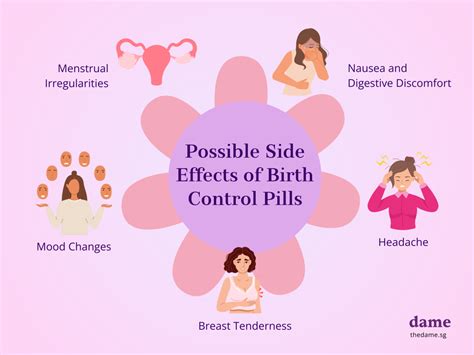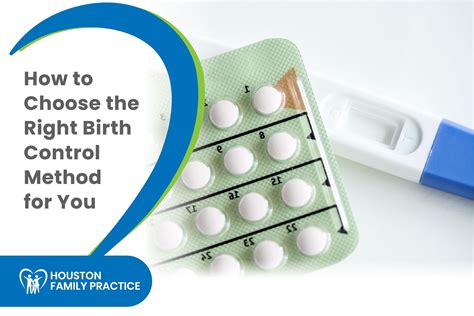Intro
Discover the ultimate Birth Control Pill Guide, covering types, benefits, and side effects. Learn about hormonal, combination, and low-dose pills, and understand contraception options, menstrual regulation, and reproductive health.
The use of birth control pills has become increasingly popular over the years, with millions of women worldwide relying on them as a safe and effective method of contraception. However, with so many different types of birth control pills available, it can be overwhelming to navigate the various options and choose the one that best suits your needs. Whether you're considering starting birth control for the first time or looking to switch to a different type, it's essential to understand the benefits, risks, and side effects associated with these medications.
Birth control pills are a type of hormonal contraception that works by preventing ovulation, thickening cervical mucus to prevent sperm from reaching the egg, and thinning the lining of the uterus to prevent implantation. They are typically taken once a day, and when used correctly, they can be up to 99% effective in preventing pregnancy. In addition to their contraceptive benefits, birth control pills can also help regulate menstrual cycles, reduce menstrual cramps and heavy bleeding, and even improve acne.
Despite their many benefits, birth control pills can also have side effects, such as nausea, breast tenderness, and mood changes. Some women may also experience more serious side effects, such as blood clots, high blood pressure, and liver problems. It's crucial to discuss your medical history and any concerns you may have with your healthcare provider before starting birth control pills. They can help you determine which type of pill is best for you and monitor you for any potential side effects.
Types of Birth Control Pills

There are several types of birth control pills available, each with its own unique characteristics and benefits. The most common types of birth control pills include combination pills, progestin-only pills, and extended-cycle pills. Combination pills, which contain both estrogen and progestin, are the most commonly prescribed type of birth control pill. They work by preventing ovulation and thickening cervical mucus to prevent sperm from reaching the egg. Progestin-only pills, on the other hand, contain only progestin and are often prescribed for women who are breastfeeding or have certain medical conditions. Extended-cycle pills are designed to be taken for a longer period, typically 84 days, followed by a 7-day break.
Combination Pills
Combination pills are the most popular type of birth control pill, and they come in a variety of formulations. Some combination pills contain a fixed dose of estrogen and progestin, while others contain a varying dose of estrogen and a fixed dose of progestin. Combination pills can help regulate menstrual cycles, reduce menstrual cramps and heavy bleeding, and even improve acne. However, they can also increase the risk of blood clots, high blood pressure, and liver problems.Progestin-Only Pills
Progestin-only pills, also known as the mini-pill, contain only progestin and are often prescribed for women who are breastfeeding or have certain medical conditions. They work by thickening cervical mucus to prevent sperm from reaching the egg and thinning the lining of the uterus to prevent implantation. Progestin-only pills are a good option for women who are sensitive to estrogen or have a history of blood clots. However, they can cause irregular menstrual bleeding and may not be as effective as combination pills in preventing pregnancy.Extended-Cycle Pills
Extended-cycle pills are designed to be taken for a longer period, typically 84 days, followed by a 7-day break. They work by preventing ovulation and thickening cervical mucus to prevent sperm from reaching the egg. Extended-cycle pills can help reduce the frequency of menstrual periods and may be a good option for women who experience heavy or painful periods. However, they can also increase the risk of breakthrough bleeding and may not be suitable for all women.Benefits of Birth Control Pills

In addition to their contraceptive benefits, birth control pills can also have a number of other benefits. Some of the most significant benefits of birth control pills include:
- Regulation of menstrual cycles: Birth control pills can help regulate menstrual cycles, reducing the frequency and severity of menstrual cramps and heavy bleeding.
- Improvement of acne: Birth control pills can help improve acne by reducing the production of sebum, a oily substance that can clog pores and cause breakouts.
- Reduction of menstrual symptoms: Birth control pills can help reduce menstrual symptoms such as bloating, breast tenderness, and mood changes.
- Protection against certain health conditions: Birth control pills can help protect against certain health conditions, such as endometrial and ovarian cancer, as well as pelvic inflammatory disease.
Regulation of Menstrual Cycles
Birth control pills can help regulate menstrual cycles, reducing the frequency and severity of menstrual cramps and heavy bleeding. This can be especially beneficial for women who experience irregular or heavy periods. By regulating menstrual cycles, birth control pills can also help reduce the risk of anemia and other health problems associated with heavy bleeding.Improvement of Acne
Birth control pills can help improve acne by reducing the production of sebum, a oily substance that can clog pores and cause breakouts. This can be especially beneficial for women who experience acne due to hormonal fluctuations. By reducing the production of sebum, birth control pills can help improve the appearance of skin and reduce the risk of scarring.Reduction of Menstrual Symptoms
Birth control pills can help reduce menstrual symptoms such as bloating, breast tenderness, and mood changes. This can be especially beneficial for women who experience severe menstrual symptoms. By reducing the production of hormones that contribute to these symptoms, birth control pills can help improve overall health and well-being.Risks and Side Effects of Birth Control Pills

While birth control pills can be a safe and effective method of contraception, they can also have a number of risks and side effects. Some of the most significant risks and side effects of birth control pills include:
- Blood clots: Birth control pills can increase the risk of blood clots, which can be life-threatening if left untreated.
- High blood pressure: Birth control pills can increase blood pressure, which can increase the risk of heart disease and stroke.
- Liver problems: Birth control pills can increase the risk of liver problems, such as liver cancer and liver disease.
- Nausea and vomiting: Birth control pills can cause nausea and vomiting, especially during the first few months of use.
- Breast tenderness: Birth control pills can cause breast tenderness and swelling, especially during the first few months of use.
Blood Clots
Birth control pills can increase the risk of blood clots, which can be life-threatening if left untreated. This is especially true for women who are over 35, smoke, or have a family history of blood clots. Women who are taking birth control pills should be aware of the signs and symptoms of blood clots, such as swelling, pain, and warmth in the legs, and seek medical attention immediately if they experience any of these symptoms.High Blood Pressure
Birth control pills can increase blood pressure, which can increase the risk of heart disease and stroke. This is especially true for women who are over 35, have a family history of high blood pressure, or are overweight. Women who are taking birth control pills should have their blood pressure checked regularly and report any changes to their healthcare provider.Liver Problems
Birth control pills can increase the risk of liver problems, such as liver cancer and liver disease. This is especially true for women who have a history of liver problems or are taking certain medications. Women who are taking birth control pills should have their liver function checked regularly and report any changes to their healthcare provider.How to Choose the Right Birth Control Pill

With so many different types of birth control pills available, it can be overwhelming to choose the right one. Here are some tips to help you choose the right birth control pill:
- Consult with your healthcare provider: Your healthcare provider can help you determine which type of birth control pill is best for you based on your medical history and personal preferences.
- Consider your lifestyle: If you have a busy lifestyle, you may want to consider a birth control pill that is easy to take and has a low risk of side effects.
- Think about your budget: Birth control pills can be expensive, so it's essential to consider your budget when choosing a pill.
- Read reviews and do your research: Reading reviews and doing your research can help you learn more about the different types of birth control pills available and make an informed decision.
Consult with Your Healthcare Provider
Your healthcare provider can help you determine which type of birth control pill is best for you based on your medical history and personal preferences. They can also help you understand the benefits and risks of each type of pill and answer any questions you may have.Consider Your Lifestyle
If you have a busy lifestyle, you may want to consider a birth control pill that is easy to take and has a low risk of side effects. For example, a combination pill that contains a fixed dose of estrogen and progestin may be a good option.Think About Your Budget
Birth control pills can be expensive, so it's essential to consider your budget when choosing a pill. Some birth control pills may be more expensive than others, but they may also offer additional benefits, such as improved acne or reduced menstrual symptoms.Conclusion and Next Steps

In conclusion, birth control pills can be a safe and effective method of contraception, but it's essential to choose the right type of pill based on your medical history and personal preferences. By understanding the benefits and risks of each type of pill and consulting with your healthcare provider, you can make an informed decision and find a pill that meets your needs. If you have any questions or concerns about birth control pills, don't hesitate to reach out to your healthcare provider or a trusted resource.
We invite you to share your thoughts and experiences with birth control pills in the comments section below. Have you taken birth control pills before? What type of pill did you take, and what were your experiences? Share your story with us and help others make informed decisions about their reproductive health.
What are the most common types of birth control pills?
+The most common types of birth control pills are combination pills, progestin-only pills, and extended-cycle pills.
How do birth control pills work?
+Birth control pills work by preventing ovulation, thickening cervical mucus to prevent sperm from reaching the egg, and thinning the lining of the uterus to prevent implantation.
What are the benefits of taking birth control pills?
+The benefits of taking birth control pills include regulation of menstrual cycles, improvement of acne, reduction of menstrual symptoms, and protection against certain health conditions.
What are the risks and side effects of birth control pills?
+The risks and side effects of birth control pills include blood clots, high blood pressure, liver problems, nausea and vomiting, and breast tenderness.
How do I choose the right birth control pill?
+To choose the right birth control pill, consult with your healthcare provider, consider your lifestyle, think about your budget, and read reviews and do your research.
